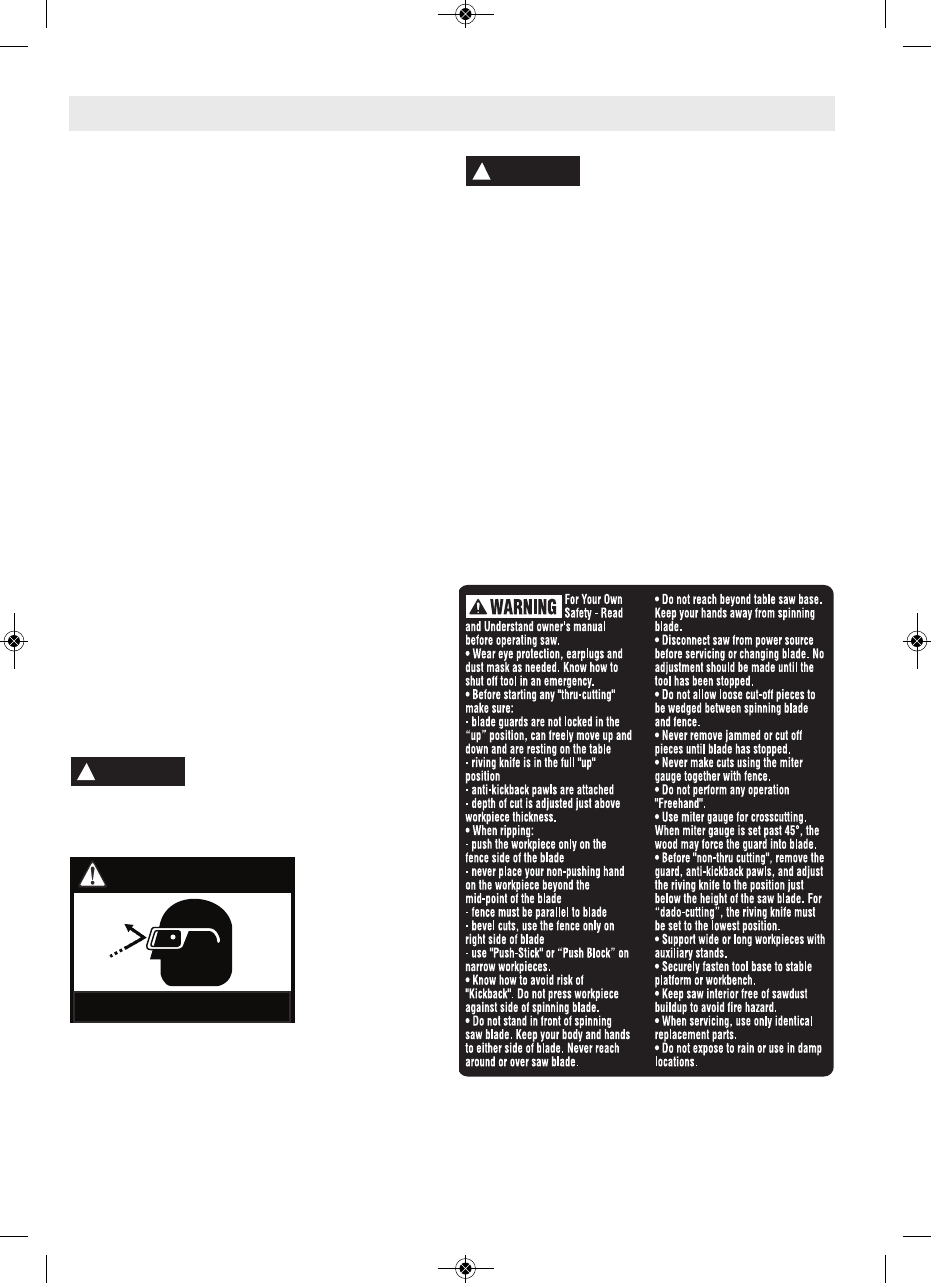
-5-
H%(&% %&$'&! %I
- NEVER use grinding wheels, abrasive cut-off
wheels, fric tion wheels (metal slitting blades) wire
wheels or buffing wheels.
.USE ONLY RECOMMENDED ACCESSORIES.
/Crosscutting operations are more conveniently
worked and with greater safety if an auxiliary wood
facing is attached to the miter gauge. (See Page 26).
0Make sure the top of the cutting tool rotates toward
you when standing in normal operating position. Also
make sure the cutting tool, arbor collars and arbor
nut are installed pro p erly. Keep the cutting tool as low
as possible for the oper ation being performed. Keep
all guards in place whenever possible.
GDo not use any blade or other cutting tool marked
for an operating speed less than 5000 R.P.M. Never
use a cutting tool larger in diameter than the diameter
for which the saw was designed. For greatest safety
and efficiency when rip ping, use the maximum diam-
eter blade for which the saw is designed, since under
these conditions the spreader is near est the blade.
1Make sure the table insert is flush or slightly below
the table surface on all sides except for rear side.
NEVER oper ate the saw unless the proper insert is
installed.
& %&+
SAFETY IS A COMBINATION OF OPERATOR
COMMON SENSE AND ALERTNESS AT ALL
TIMES WHEN THE TABLE SAW IS BEING USED.
Do not allow familiarity (gained from fre quent use of
your table saw) to become com -
mon place. Always remember that
a careless fraction of a second is sufficient to inflict
severe injury.
The operation of
any power tool
can result in for-
eign objects being
thrown into the
eyes, which can
result in severe
eye damage. Al-
ways wear safety
goggles that com-
ply with ANSI Z87.1 (shown on pack age) before
commencing power tool operation.
%;91 0A?@ />1-@10 .E <;C1>
?-:05:3 ?-C5:3 3>5:05:3
0>5885:3 -:0 ;@41> /;:?@>A/@5;: -/@5B5@51?
/;:@-5:? /4195/-8? 7:;C: @; /-A?1 /-:/1>
.5>@40121/@?;>;@41>>1<>;0A/@5B14->9%;91
1D-9<81?;2@41?1/4195/-8?->1
• Lead from lead-based paints,
• Crystalline silica from bricks and cement and other
masonry products, and
• Arsenic and chromium from chemically treated
lumber.
Your risk from these exposures varies, depending
on how often you do this type of work. To reduce
your exposure to these chemicals: work in a well
ventilated area, and work with approved safety
equipment, such as those dust masks that are spe-
cially designed to filter out microscopic particles.
!& !!)%&+ %&$'&! %
&&""$! &$! &!+!'$
&%)
005@5;:-8%-21@E$A81?
WARNING
Wear Eye Protection
!
WARNING
!
WARNING
BM 2610014415 01-11 E:BM 2610012089 12-10 E 1/10/11 7:17 AM Page 5


















